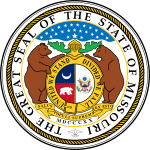
The Whig Party was a mid-19th century political party in the United States. Alongside the Democratic Party, it was one of two major parties between the late 1830s and the early 1850s and part of the Second Party System. As well as four Whig presidents, other prominent members included Henry Clay, Daniel Webster, Rufus Choate, William Seward, John J. Crittenden, and John Quincy Adams. The Whig base of support was amongst entrepreneurs, professionals, Protestant Christians, the urban middle class, and nativists. It had much less backing from poor farmers and unskilled workers.

Presidential elections were held in the United States from November 1 to December 4, 1844. Democratic nominee James K. Polk narrowly defeated Whig Henry Clay in a close contest turning on the controversial issues of slavery and the annexation of the Republic of Texas. This is the only election in which both major party nominees served as Speaker of the House at one point, and the first in which neither candidate held elective office at the time.
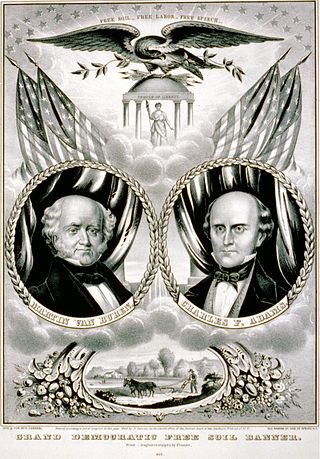
The Free Soil Party, also called the Free Democratic Party or the Free Democracy, was a political party in the United States from 1848 to 1854, when it merged into the Republican Party. The party was focused on opposing the expansion of slavery into the western territories of the United States. The 1848 presidential election took place in the aftermath of the Mexican–American War and debates over the extension of slavery into the Mexican Cession. After the Whig Party and the Democratic Party nominated presidential candidates who were unwilling to rule out the extension of slavery into the Mexican Cession, anti-slavery Democrats and Whigs joined with members of the Liberty Party to form the new Free Soil Party. Running as the Free Soil presidential candidate, former President Martin Van Buren won 10.1 percent of the popular vote, the strongest popular vote performance by a third party up to that point in U.S. history.

The 15th United States Congress was a meeting of the legislative branch of the United States federal government, consisting of the United States Senate and the United States House of Representatives. It met in the Old Brick Capitol in Washington, D.C. from March 4, 1817, to March 4, 1819, during the first two years of James Monroe's presidency. The apportionment of seats in the House of Representatives was based on the 1810 United States census. Both chambers had a Democratic-Republican majority.

The 29th United States Congress was a meeting of the legislative branch of the United States federal government, consisting of the United States Senate and the United States House of Representatives. It met in Washington, D.C. from March 4, 1845, to March 4, 1847, during the first two years of James Polk's presidency. The apportionment of seats in the House of Representatives was based on the 1840 United States census. Both chambers had a Democratic majority.

John Parker Hale was an American politician and lawyer from New Hampshire. He served in the United States House of Representatives from 1843 to 1845 and in the United States Senate from 1847 to 1853 and again from 1855 to 1865. He began his congressional career as a Democrat, but helped establish the anti-slavery Free Soil Party and eventually joined the Republican Party.

The Republic of Texas was annexed into the United States and admitted to the Union as the 28th state on December 29, 1845.
John Edwards is an American politician who was a candidate for the 2008 Democratic presidential nomination.
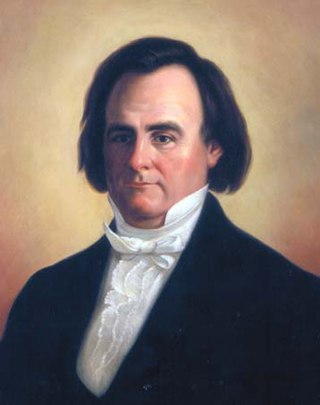
Charles Anderson Wickliffe was a U.S. Representative from Kentucky. He also served as Speaker of the Kentucky House of Representatives, the 14th Governor of Kentucky, and was appointed Postmaster General by President John Tyler. Though he consistently identified with the Whig Party, he was politically independent, and often had differences of opinion with Whig founder and fellow Kentuckian Henry Clay.
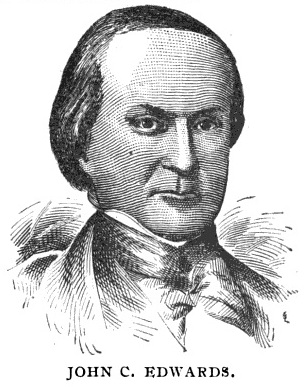
John Cummins Edwards was a Democratic politician from the state of Missouri. He served as a member of the 27th United States Congress as well as the 9th Governor of Missouri.
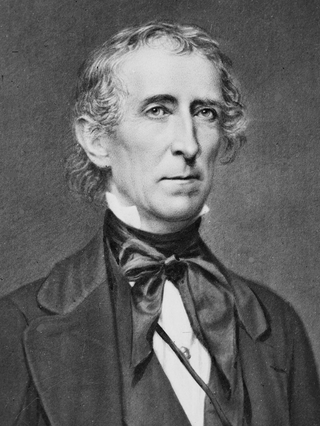
The presidency of John Tyler began on April 4, 1841, when John Tyler became the 10th President of the United States upon the death of President William Henry Harrison, and ended on March 4, 1845. He had been Vice President of the United States for only 31 days when he assumed the presidency. Tyler was the first to succeed to the office without being elected to it. To forestall constitutional uncertainty, Tyler took the presidential oath of office on April 6, assumed full presidential powers, and served out the balance of Harrison's four-year term, a precedent that would govern future extraordinary successions and eventually become codified in the Twenty-fifth Amendment. He was succeeded by James Polk of the Democratic Party.

John Tyler was the tenth president of the United States, serving from 1841 to 1845, after briefly holding office as the tenth vice president in 1841. He was elected vice president on the 1840 Whig ticket with President William Henry Harrison, succeeding to the presidency following Harrison's death 31 days after assuming office. Tyler was a stalwart supporter and advocate of states' rights, including regarding slavery, and he adopted nationalistic policies as president only when they did not infringe on the states' powers. His unexpected rise to the presidency posed a threat to the presidential ambitions of Henry Clay and other Whig politicians and left Tyler estranged from both of the nation's major political parties at the time.
Philip Leget Edwards was an American educator from the state of Kentucky and first teacher in what became the state of Oregon. After teaching in Missouri, he traveled to the Oregon Country with Jason Lee and helped establish the Methodist Mission. He was also involved with the Willamette Cattle Company before returning to Missouri where he became a lawyer and was on officer in the militia fighting against the Mormons. After moving to California, he served in the state assembly.

The 1839—1840 United States Senate election in New York was held on February 5, 1839 and January 14, 1840. Incumbent Senator Nathaniel P. Tallmadge was re-elected to a second term in office over scattered opposition.

The 1852–53 United States Senate elections were held on various dates in various states, coinciding with the 1852 presidential election. As these U.S. Senate elections were prior to the ratification of the Seventeenth Amendment in 1913, senators were chosen by state legislatures. Senators were elected over a wide range of time throughout 1852 and 1853, and a seat may have been filled months late or remained vacant due to legislative deadlock. In these elections, terms were up for the senators in Class 2.

The 1850–51 United States Senate elections were held on various dates in various states. As these U.S. Senate elections were prior to the ratification of the Seventeenth Amendment in 1913, senators were chosen by state legislatures. Senators were elected over a wide range of time throughout 1850 and 1851, and a seat may have been filled months late or remained vacant due to legislative deadlock. In these elections, terms were up for the senators in Class 1.

The 68th New York State Legislature, consisting of the New York State Senate and the New York State Assembly, met from January 7 to May 14, 1845, during the first year of Silas Wright's governorship, in Albany.

The 1844 New Jersey gubernatorial election was held on October 8, 1844. Whig nominee Charles C. Stratton defeated Democratic nominee John Renshaw Thomson with 50.94% of the vote.

The 1854 Massachusetts gubernatorial election was held on November 15. American Party candidate Henry J. Gardner was elected to his first term as governor, defeating incumbent Whig governor Emory Washburn.

